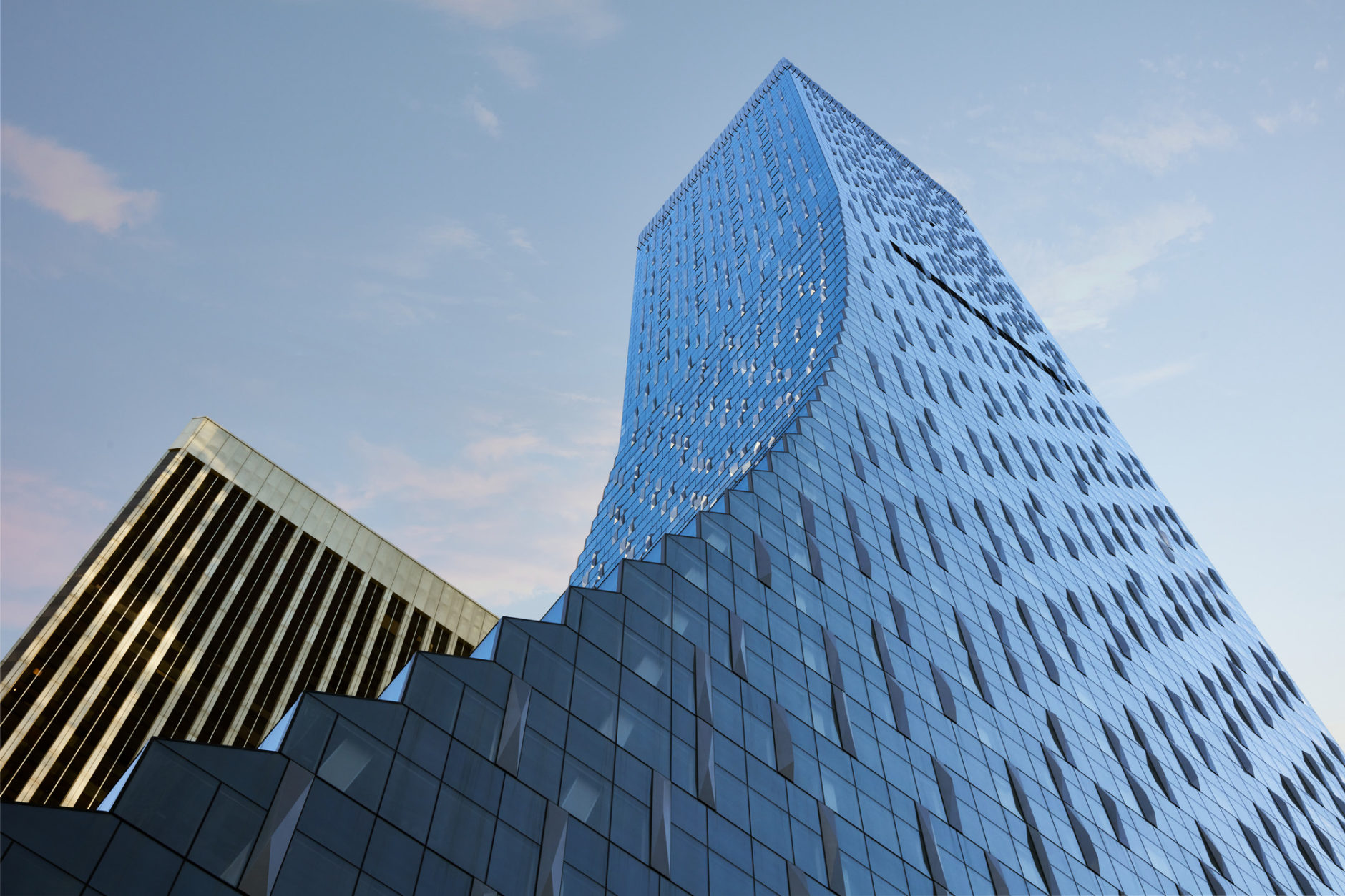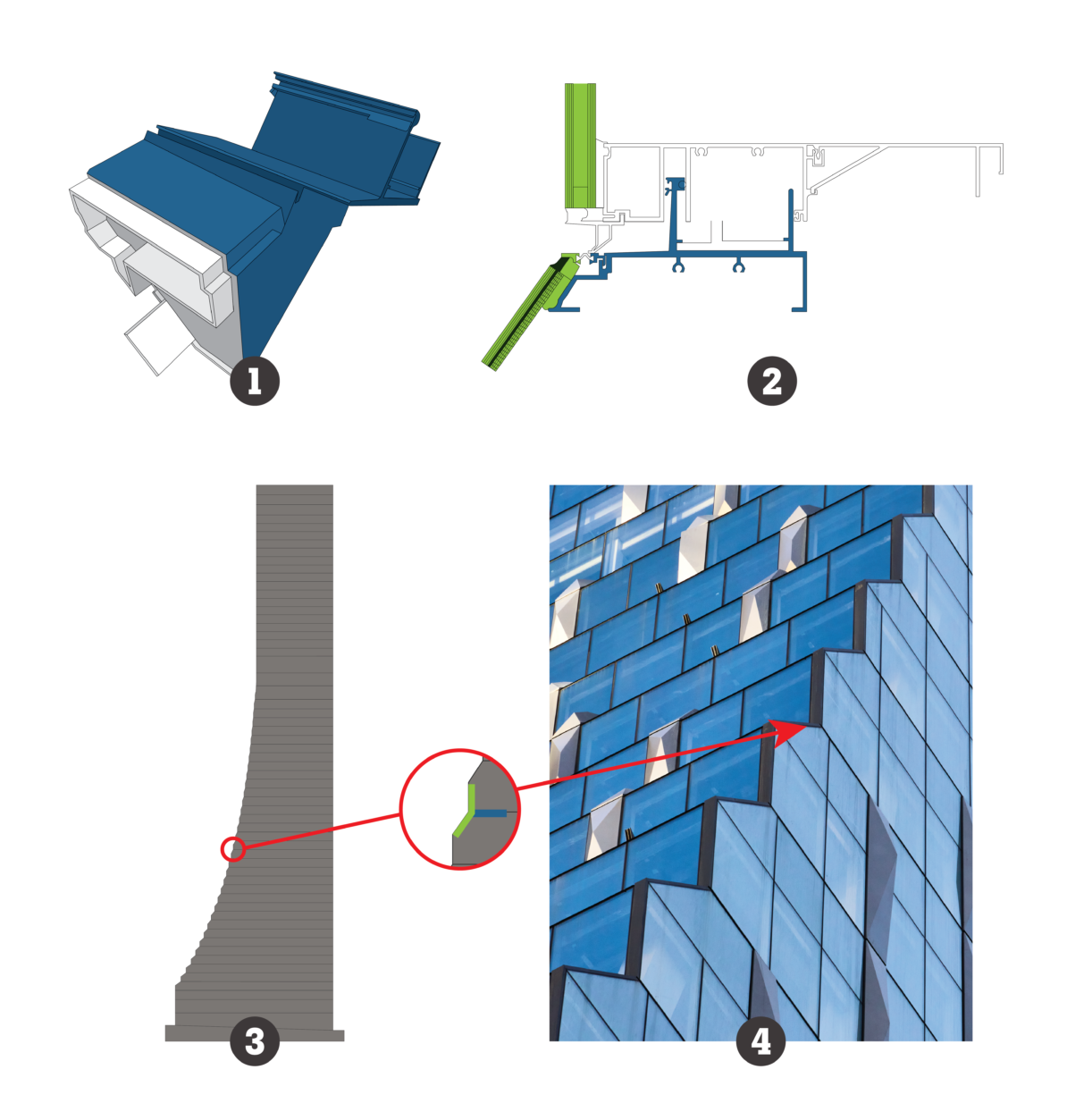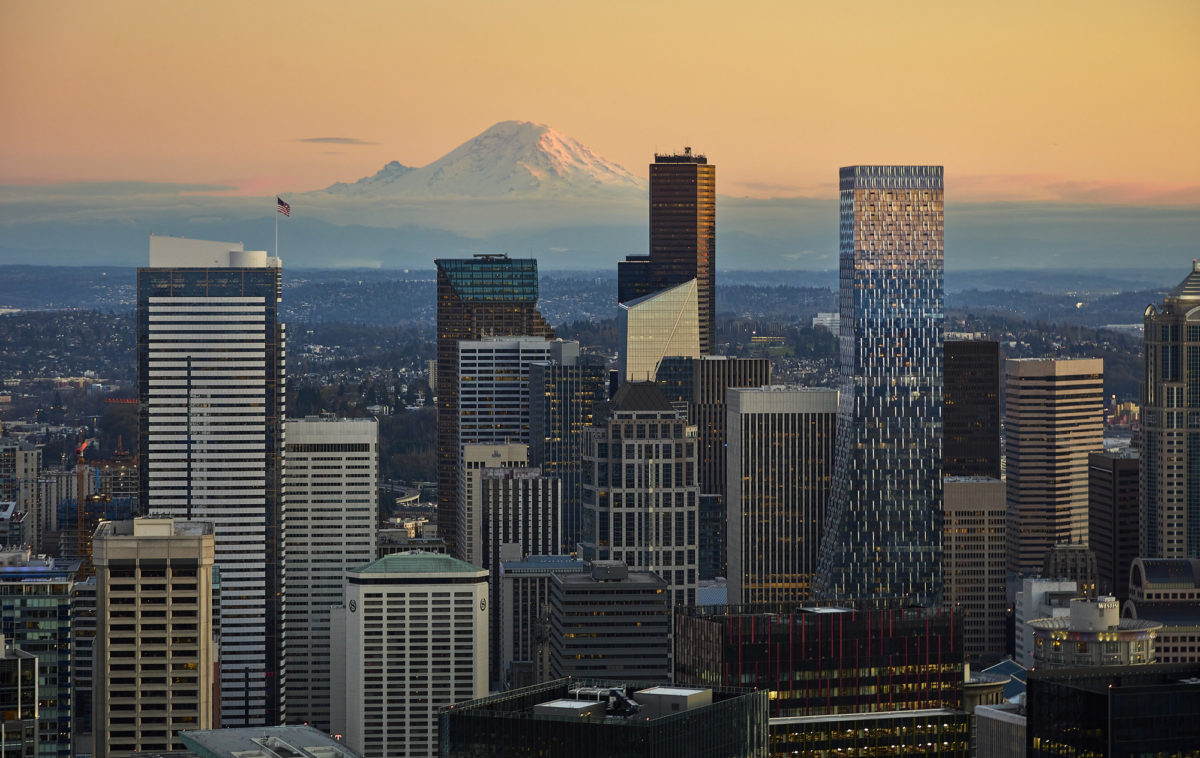Towering above the streets of downtown, the new Rainier Square Tower has been applauded for many things; namely its first-of-its-kind core construction, impressive height and unique curved facade. Sitting on a tight site in Seattle’s Central Business District, the building shares a block with Minoru Yamasaki’s iconic tapered-based Rainier Tower and redefines the Seattle skyline.
Follow along as we celebrate this iconic building in a two-part series covering the many unique elements of this 58-story, one-of-a-kind tower.
In part one, we will discuss the building blocks, from shoring to the speedcore structure, to the unique shape and façade. In part two, we will discuss how innovative elevator technology maximized the building footprint, the challenges that come with maintaining a building of such impressive size and shape and the arduous task of building above the Seattle Skyline.

Before the team could build up, they had to dig down
Rainier Square’s excavation extended 80 feet below street level, encompassing 75 percent of the city block. The remaining 25 percent is held the existing Rainier Tower, which was perched on its foundation far above the bottom of the new hole.
To support the existing building, a secant wall shoring system was placed, including 248 tiebacks and nearly 400 sensors to track possible movement. These tiebacks extended up to 120 feet horizontally under the adjacent roads and buildings, precisely threaded between sensitive utilities.
Due to the complexity of the project and the proximity of the existing tower, the shoring system went through extensive peer reviews. The excavation extended 50 feet deeper than the foundation of the adjacent 41-story tower—just 18 feet from its edge!
Rainier Square’s first-of-its-kind “speedcore” cut erection time in half
Perhaps the most well-known aspect of Rainier Square is the first-of-its-kind structure. Typically, in high-rise construction, a concrete core is installed well in advance of the adjacent structural steel framing. This is known as a “leading core.” The erection of the structural steel, and thus the project schedule, is constrained by how quickly the leading core can be installed.
At Rainier Square, the project team swapped out the concrete core for a composite, steel-and-concrete sandwich core, dubbed the “speedcore.” In this application, the steel core is constructed using modular steel units that are flown in by crane, stacked like building blocks, welded and later filled with concrete. With this innovative approach, the surrounding steel erection was no longer constrained by the core and the team was able to shave nine months off the erection time.
But this first-time feat didn’t come easy. Years of engineering and testing by Magnusson Klemencic Associates were followed up by intensive logistics and sequence planning by the project team, and that was followed up with physical mock-ups built by Lewis.

This innovative erection method will change the way high-rise towers are built around the world. To learn more about the core construction, read part one and part two of our Building Rainier Square series, which dive into the details of this revolutionary structure.
How did the building take such a unique shape?
The most visually striking aspect of the tower is Rainier Square’s unique sloped facade. The custom curtainwall features 3D-printed modules along the southeast corner and east face of the building. The cascading east façade protects views from the historic Rainier Tower of the City and Puget Sound while emphasizing its iconic shape and construction.
As the curtain wall cascades down the gently sloping east face of the tower, the angle of each corner is different than the previous one. Making it even more complicated is where the east face meets the gently sloping south face.

The result is that the intersecting angle of each curtainwall unit on this corner of the building is unique. This challenging geometry meant the team needed to devise an alternative solution for joining the curtain wall together at the dimensional accuracy required. To complete the curtainwall fabrication, 140 3-D printed nodes were produced, each to a unique angle that is specific to that exact point on the building.
In our next installment, we’ll discuss how to maintain such a tall and shapely building once complete, how innovative use of an elevator maximizes floor plate size and the arduous task of building above the Seattle skyline.

